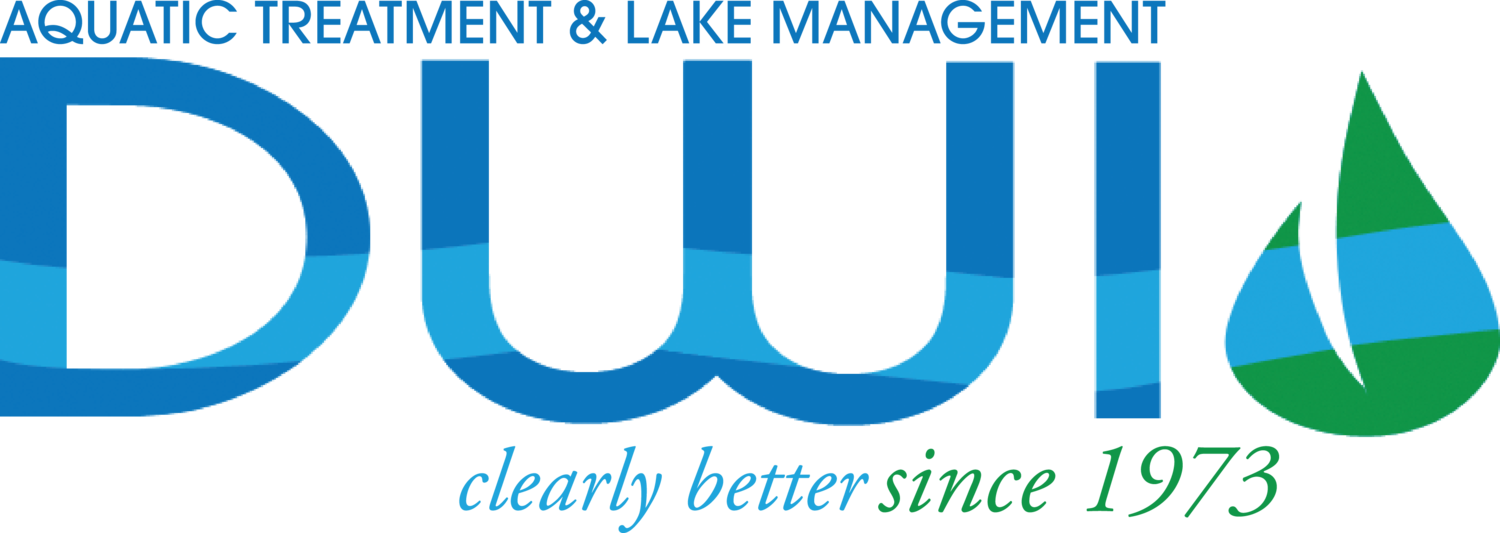By Patrick Simmsgeiger, Founder of DWI
All it takes is a single glance to fully appreciate the value of any beautiful land or waterscape, a single moment of calm clarity provoked by the trees or water.
Lakes, ponds, or streams like the ones that exist in apartment communities, condominiums, and golf courses are built and maintained specifically for the appreciation of the community residents.
Properties are beautifully designed with running streams, cascading ponds, and captivating lakes. But, while it only takes a single and instant moment to enjoy the value of these beautifully constructed environments, it takes much longer than a simple moment to design, plan and build these water features. Even more time consuming is the maintenance necessary to sustain the placid beauty of any lake, pond, or stream once it has been constructed.
Unfortunately, regardless of the fact that the initial design of a water feature is crucial to its proper function and sustainability over time, more often than not a lake maintenance company is not consulted prior to the design of a water feature. Experienced lake maintenance professionals can accept this hindrance and move forward effectively maintaining the water features once built; still, simple considerations during the design stages can effectively limit problematic situations saving both maintenance time and expenditure in the many years following construction.
Being that the design of a water feature is crucial to its proper function, maintenance issues should be considered during the initial design stages to prevent problematic situations from arising post-construction. Planning ahead will limit the water features’ time and budget consuming situations and allow the feature to maintain its tranquil appeal all year long, year after year. A few key factors that should be considered when initially designing a water feature are: surrounding landscape, proper equipment, and dimensions of the feature itself.
It is reckless to ignore these factors during the initial design stage (prior to construction), as they will have a huge affect on the overall functionality of any lake, pond, or stream. The following sections will identify and elaborate on these factors that, if considered generous amount of time and money in the long run.
Snub the Shrubs!
It’s apparent that a water feature- be it a lake, pond, or stream- adds a beautiful finishing touch to any landscape design. Plants and water are purposefully placed in close proximity to provide soothing experiences for eyes, ears, and souls the admirers. The combination of land plants and water features enhance the overall beauty and setting, providing a peaceful environment.
Ironically, the most commonly overlooked factor when designing a water feature is landscaping- and, how the surrounding plant life will affect the functionality of the water feature.
The surrounding landscape should be considered when designing a waterscape. It is the simplest of considerations and one that will very easily prevent expensive problematic circumstances from unfolding in the years that follow construction.
Land plants at the edge of the water are the greatest source of potential problems for any water feature. On paper it seems like a great idea to design a water feature with plants around the water features’ edge; however, land plants are often placed too close to the water and can actually destroy the aquatic environment. Material from land plants falling in to the water adds an immense addition of nutrients and nitrogen to the biology of the water feature creating potential for unsightly problems.
The biggest landscape problem for lake maintenance is deciduous trees and shrubs hanging over the water. Common plants that are planted right at the waters edge provide a problematic dynamic are: Bougainvillea, Weeping Willows, Pepper Trees, Magnolias, and Jacarandas. These plants are constantly reproducing and shedding in to the water features. They encourage major problems because they drop so much material in to the water.
It is certainly true that land plants provide a beautiful scene when placed near the edge of the water but they should be planted near (not directly on) the edge. A simple solution is to set plants back just slightly. When designing and building the waterscape, the plants should be pushed back so they don’t hang over the water; design precaution should be taken to ensure that land plants could be pruned back if over time they sway in the direction of the water.
Eliminating the potential for abundant material waste from land plants falling in to the water is the most effective way to eliminate future aquatic troubles. Designing the water feature with plants and shrubs set back from the edge is by far the most simple solution to some of the most plaguing issue in water feature maintenance. Ideally, the dynamic between land and waterscape should be considered at the design phase- before the water feature is built!
There is no reason to ignore this factor during the design stages, it cost no additional funds to simply set plants back from the water. Further, it’s guaranteed to save time, money, and maintenance stress in the years post construction.
Equip the Ecosystem!
Because water features develop their own ecosystems, the maintenance of waterscapes requires some general knowledge of biology to understand the underlying issues behind lake, pond, or stream maintenance.
Lakes, ponds, and streams are landscape-imbedded water features that develop their own ecosystem and become a united piece of the landscaping. There is much more to maintaining these water features than just clearing the leaves- the equipment needs to function alongside the features’ own ecosystem to seamlessly maintain its aesthetic appeal.
A second factor to be considered when designing any body of water is the quality and placement of technical equipment. Quality should never be compromised during the initial design! Skimmers, strainer baskets plumbing, pumps, aerators, and filtration systems need to be up to par to prevent the need for constant repairs and maintenance down the road.
Material debris from land plants in the water (as discussed in the previous section) creates an even heightened dilemma when quality of filtration equipment is compromised. Any issues related to excess trees, shrubs, leaves, adding material, and nutrients to the water feature will provide a more devastating effect if the proper equipment is not fit to handle the situation.
At the design phase of a project, it may seem that compromising quality will save money but for the sake of longevity and sustainability of the water feature over time, quality should never be compromised. In the long run, you will end up paying all that you saved and likely much more.
In addition to ensuring quality equipment is installed, it is more important to ensure that these quality systems are installed with the features’ size, biology, and surrounding environment in mind. Although the water features themselves are man-made, they will be functioning within the surrounding natural environment. Proper positioning relative to the surrounding environmental conditions is an important consideration when designing a water feature.
A skimmer/ strainer, for example, is designed to collect the debris and keep the water clean but if it is placed in the incorrect position it will not properly serve its purpose. Positioning skimmer on the correct side of the water feature, where it is on the receiving end of the wind, will allow the equipment to do its job capturing the debris and keeping it off the face of the water. This will prevent a visually displeasing mess on the surface; more importantly, it will also prevent that messy load of plant material from sinking to the bottom where it can decompose and cause more complex issues.
Designing lakes, ponds, and streams with quality technical equipment that works alongside the biology of the feature and its surrounding environment is helpful in the long-term sustainability and maintenance of the feature.
Design with Depth!
A third key factor to be considered is the actual dimensional construction of the water feature- and how photosynthesis will affect those dimensions. A lot goes on under the surface of a water feature. When initially designing a water feature it is important to understand what occurs under the water surface and to provide room for those happenings to occur.
For example, a pond’s “cycle of life” beings with plants. Through photosynthesis plants (commonly algae) convert elements (such as nitrogen and phosphorous) in to organic material- or simply, “food”. All life in a pond is completely dependent upon the photosynthetic process for “food”, and therefore life.
Photosynthesis is the basic concept to be considered when performing maintenance on lakes, ponds, or streams. Green plants and algae use photosynthesis to convert nutrients in to usable materials so they may grow, flower, and reproduce. Energy from sunlight drives this process of photosynthesis by using elements like nitrogen, carbon dioxide, phosphate, and iron to create new plant growth and oxygen.
In many cases, water features are not built with enough depth to provide a place for the underwater happenings to properly occur. Ponds, for example, are often built too shallow in which cases that allow sunlight to directly reach the bottom of the feature and encourage unwanted aquatic plant and algae growth.
It is important to keep the algae in check in order to prevent algal blooms which can deplete the water of oxygen that the fish need to survive. If the water in your pond has less than two feet of visibility through the water, there is too much algae- indicating the danger of a destructive bloom.
When building a water feature there are no absolute rules as to depth but the feature is easier maintained when the process of photosynthesis is considered. Deeper water will always have a tendency to remain clear of unwanted growth. In general, plants will have a hard time growing at levels beyond six or eight feet of depth.
Man-made lakes, ponds, or streams are designed to compliment the surrounding landscape, serving as an imbedded aesthetic element instantly creating a uniquely serene ambiance. The water features work in conjunction with the landscaping to provide a naturally beautiful setting. The location and type of all land plants and trees as well as the type of water features are planned with precision to provide the most appealing environment.
To the casual observer, it may appear that these beautiful displays of nature are self-maintained within their own ecosystems. However, the simplicity of their maintenance is not as straightforward as the simplicity of their beauty. Once a waterscape plan is implemented and the features become a living part of the property, the maintenance is crucial to sustaining the aesthetic integrity and appeal. Lakes, ponds, and streams are living, growing ecosystems that require regular maintenance.
The initial design of any water feature hugely affects its overall functionality and the ease of its maintenance. A waterscape that has been designed with the surrounding landscape, proper equipment, and dimensions of the feature itself in mind will lend itself more easily to maintenance and sustainability over time. If feasible, it is best to consult a lake maintenance company for input during the initial design phase of a waterscape project. Consulting a waterscape professional (and considering the factors that will affect the waterscapes functionality) before the lake, pond, or stream during the design phase is the easiest way to save time and money in the long run.
An experienced lake maintenance company posses the knowledge of waterscape biology and the experience necessary to spot any potential problems and quickly provide logistical, effective solutions so that the aesthetic appeal of the waterscape is not compromised by recurring problematic situations. Consulting a waterscape maintenance company during the design stages will help retain the long term value of your investment, and so seamlessly achieve the intended purpose of any waterscape feature: continuously providing simple moments of refreshing beauty to all community members.



